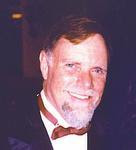I’ve just returned from my annual pilgrimage to the Conference on World Affairs, and- as I’ve been doing for the last 15 years- I will pass along my observations. Quite simply, this year’s conference seemed to be the best ever, with all of the panels and lectures rising to a level that exceeded anything in years past. Of course, all of the usual topics were presented, discussed, and debated: climate change, global petro-supply projections, geo-engineering solutions, 4th generation warfare tactics, looming global food shortages, U.S. foreign policy as a destabilizing element, exponential rise in population numbers within the Islamic world, and something new this year- a look at the neurobiology of the human belief process. It is this last topic on which I want to report, for it represents something that may possibly have a bearing on everything else.
On a panel titled, “Hardwired to Believe,” neurobiologists presented data on a study which looked at brain response differences in people who classified themselves as either a believer or a skeptic. Here’s how it worked. The person was put into an MRI machine which looked at blood flow in the brain when the person was presented with certain statements of belief. Such statements were “Patriotism is always a virtue,” or “Democracy is worth dying for,” or “Jesus is the Savior of mankind,” or “Evolution is a hoax.” Self-proclaimed believers responded to such statements with brain activity in the pleasure centers- brain activity similar to that which resulted from seeing the image of an attractive member of the opposite sex, or from hearing a favorite piece of music. Self-proclaimed skeptics had no such pleasure response to the belief statements.
The MRI tests were done in the United States with the belief statements reflecting the cultural and religious ideas that stir debate here in America. Presumably, the same results would be seen in a Muslim believer who was stimulated with statements like “The Koran is the source of all truth and wisdom,” or “Religious martyrs go to Heaven,” or “The U.S. invasion of Iraq is a modern crusade.” Assuming that the MRI tests show a real and valid neuro-response to the universal phenomenon of human belief, and assuming that the biological mechanism works the same way in the Islamic world, the implications are staggering. All the happy talk that “The U.S. Marines are winning hearts and minds in the Mideast,” is probably completely bogus. The science seems to show that people don’t change beliefs easily, not even at the point of a gun.
How, you might ask, does this science impact the other topics at this year’s conference? Wendy Chamberlin gave a sobering lecture about the rise of Islam. Chamberlin was the United States ambassador to Pakistan at the time of 9/11 and during the year leading up to the U.S. invasion of Iraq. Here are some of her statistics. In the Islamic world, half (50%) of the entire population is under the age of 25. If you increase the age to 30, then 70% of the entire population is under that age. And within that gigantic population of young Muslims, the unemployment rate is 40%. The replacement rate within Islam is 4. That means that for every Muslim who dies, 4 are born. In Japan, the rate is .8, so Japan is losing population. In the United States, the replacement rate is 1.2. By the end of the 21st century, Muslims will outnumber all the rest of the non-Islamic world combined.
Muslims have beliefs that are different from the beliefs of non-Muslims. And as the neurobiological research shows, beliefs within Islam won’t change just to suit the United States. Now, back to that reservoir of the 40% unemployed Muslims under the age of 30. These are the young people who are writing the book on something called 4th generation warfare, which means that there are ways of projecting cultural and religious influence without building aircraft carriers. If the wars of the future will be fought over ideas (which seems like a certainty), then maybe we should be training fewer Marines and more scholars.
Subscribe to:
Post Comments (Atom)




No comments:
Post a Comment